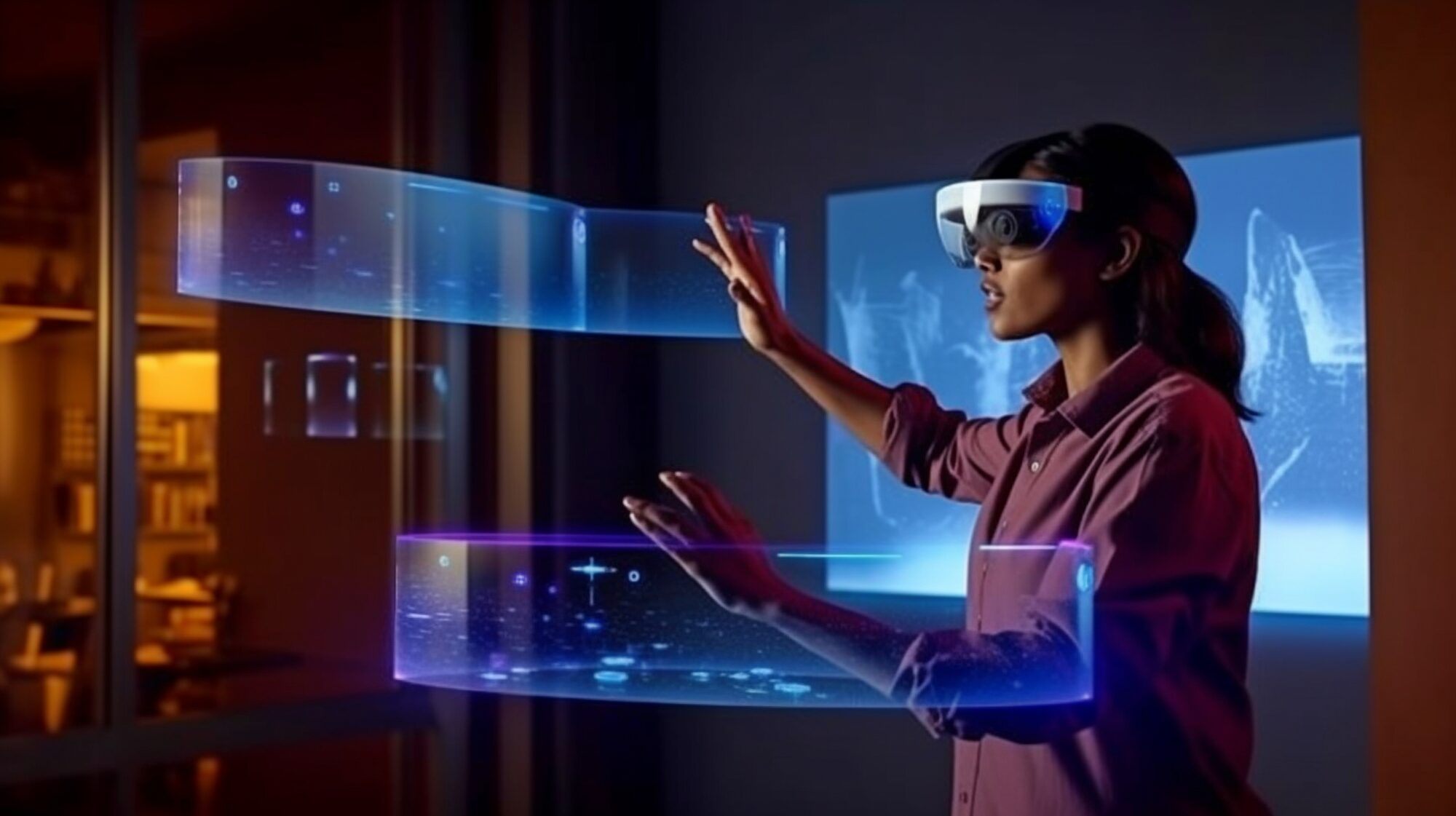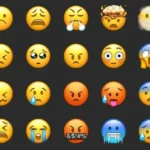
Magical Virtual Reality Games Using Hololens, Generative AI
Welcome to the dynamic world of Virtual Reality (VR), where the realms of imagination and technology converge to redefine how we experience the digital landscape. From its humble beginnings in the late 1960s to the sophisticated VR ecosystems of today, this journey has been marked by groundbreaking inventions, technological leaps, and a growing global community of enthusiasts. Join us as we delve into 25 historical facts and numerical trivia that encapsulate the evolution of Virtual Reality, unveiling the milestones, innovations, and figures that have shaped this immersive frontier. Discover how VR has transcended mere entertainment, influencing diverse industries and reshaping the way we perceive and interact with the digital realm.
1968: Birth of VR Concept
In 1968, the concept of virtual reality (VR) took its first steps with the groundbreaking work of computer scientist Ivan Sutherland and his student, J.C.R. Licklider. Together, they developed the first head-mounted display (HMD), aptly named the “Sword of Damocles.” This primitive device suspended from the ceiling, illustrating the early challenges of creating immersive virtual experiences. The Sword of Damocles laid the foundation for subsequent advancements in VR technology, sparking the imaginations of researchers and paving the way for the development of more sophisticated VR headsets in the years to come.
1987: First Modern VR Headset
The year 1987 marked a crucial milestone in VR history with the introduction of the “Dataglove” by Jaron Lanier. This device was a pioneer in the realm of hand-tracking technology, featuring a glove embedded with sensors to capture and interpret hand movements in real-time. Lanier’s Dataglove represented a significant leap forward in the quest for more immersive interactions within virtual environments. Although rudimentary by today’s standards, the Dataglove laid the groundwork for the hand-tracking capabilities that have become integral to contemporary VR experiences.
1991: Term “Virtual Reality” Coined
In 1991, the term “virtual reality” was officially coined by Jaron Lanier, the same visionary behind the Dataglove. This marked a crucial moment in the popularization and formalization of the concept, providing a succinct and evocative label for the immersive digital experiences that would captivate the world in the years to come. Lanier’s terminology facilitated communication and discourse surrounding VR, allowing it to emerge from the realms of research labs into mainstream conversations about the future of technology and human-computer interaction.
1993: SEGA VR Glasses
In 1993, SEGA, a major player in the gaming industry, made a foray into virtual reality with the introduction of VR glasses for arcade gaming. Despite the enthusiasm surrounding the project, technical limitations, including issues related to motion sickness and display quality, led to the eventual abandonment of SEGA’s VR initiative. This early setback highlighted the challenges faced by developers in delivering a seamless and comfortable VR experience, lessons that would be crucial for the evolution of VR technology in the years to follow.
1995: Nintendo Virtual Boy
Nintendo’s venture into virtual reality came in 1995 with the release of the Virtual Boy, a tabletop VR gaming console. Despite its innovative approach, the Virtual Boy faced commercial failure due to several factors, including its monochromatic display and the discomfort caused by extended use. The Virtual Boy serves as a cautionary tale in VR history, emphasizing the importance of addressing ergonomic and technical challenges to ensure widespread adoption and success in the consumer market.
2010: Oculus VR Founded
The year 2010 saw the founding of Oculus VR by Palmer Luckey, a key moment that would reinvigorate interest in virtual reality. Oculus VR emerged as a catalyst for the resurgence of VR technology, driven by Luckey’s vision of creating affordable and accessible VR experiences for consumers. The company’s commitment to developing high-quality VR hardware and fostering a community of developers laid the groundwork for the VR revolution that unfolded in the following years.
2012: Oculus Rift Kickstarter Campaign
The pivotal year of 2012 witnessed a transformative event in the history of VR—the launch of the Oculus Rift Kickstarter campaign. Palmer Luckey and his team sought crowdfunding to bring their VR headset to the masses, and the campaign exceeded all expectations by raising over $2.4 million. This outpouring of support from the community not only provided the necessary funds for Oculus Rift’s development but also signaled a widespread interest in consumer-grade virtual reality experiences.
2014: Facebook Acquires Oculus VR
In a move that underscored the growing significance of virtual reality, social media giant Facebook acquired Oculus VR in 2014 for a staggering $2 billion. This acquisition, spearheaded by Mark Zuckerberg, demonstrated the potential for VR to transcend gaming and entertainment, becoming a central element in the future of social interaction and communication. The infusion of resources from Facebook accelerated the development of VR technology and expanded its scope beyond gaming applications.
2016: HTC Vive and PlayStation VR
The year 2016 witnessed a dual milestone in the consumer VR landscape with the release of two major VR platforms: the HTC Vive and PlayStation VR. The HTC Vive, developed in collaboration with Valve, introduced room-scale tracking, allowing users to physically move within a designated space. Concurrently, PlayStation VR brought virtual reality to console gaming, leveraging the existing PlayStation ecosystem. These releases marked a significant step forward in making VR more accessible to a broader audience and diversifying its applications beyond the realm of dedicated PC setups.
2016: Google Daydream
Google entered the VR arena in 2016 with the launch of Daydream, a platform designed to bring VR experiences to mobile devices. Daydream aimed to make VR more accessible by utilizing smartphones as VR displays, providing users with a portable and cost-effective entry point into virtual reality. The platform supported a range of Android devices, and its introduction contributed to the democratization of VR, allowing a larger segment of the population to explore and enjoy immersive digital environments.
2019: Valve Index Release
In 2019, Valve, a key player in the gaming industry and the creator of the Steam platform, released the Valve Index VR headset. Renowned for its high-end specifications, including a high refresh rate and precise tracking, the Valve Index aimed to provide users with a cutting-edge VR experience. This release demonstrated Valve’s commitment to advancing VR technology and offering users a premium option for immersive gaming and interactive experiences.
2020: Half-Life: Alyx
The year 2020 saw the release of “Half-Life: Alyx,” a highly anticipated and critically acclaimed VR game developed by Valve. Serving as a prequel to the iconic Half-Life series, Alyx showcased the potential of VR in gaming, delivering a level of immersion and interactivity previously unseen in traditional gaming experiences. The success of Half-Life: Alyx contributed significantly to legitimizing VR as a formidable platform for top-tier gaming content.
2021: Meta’s Project Aria
In 2021, Meta Platforms, formerly known as Facebook, announced Project Aria, an ambitious augmented reality (AR) research project. While not strictly VR, Project Aria symbolizes the industry’s shift towards immersive technologies that blend the virtual and physical worlds. Meta’s exploration of AR technologies indicates a broader vision for the future of human-computer interaction, where virtual and augmented realities seamlessly integrate into our daily lives.
4.2 Million: PlayStation VR Units Sold
As of 2022, Sony’s PlayStation VR had achieved a significant milestone, selling approximately 4.2 million units worldwide. This figure underscores the widespread adoption of VR within the gaming community and highlights the success of making VR accessible to a broad audience through established gaming platforms.
$5.5 Billion: VR Market Size (2021)
The global virtual reality market reached a valuation of around $5.5 billion in 2021, reflecting the industry’s growth and the increasing demand for VR technologies. This substantial market size encompasses hardware, software, and services related to virtual reality, emphasizing the economic significance of this burgeoning sector.
8K Resolution: Pimax 8K VR Headset
Released in 2018, the Pimax 8K VR headset pushed the boundaries of visual fidelity with its impressive 8K resolution. Offering users an unparalleled level of detail, the Pimax 8K aimed to enhance the immersive quality of VR experiences by minimizing the visual artifacts associated with lower-resolution displays.
90 Hz: Standard Refresh Rate
A standard refresh rate of 90 Hz has become a benchmark in VR technology, ensuring a smooth and comfortable viewing experience for users. This refresh rate, measured in hertz, represents the number of frames displayed per second, with 90 Hz being a widely accepted standard that strikes a balance between visual quality and hardware performance.
200° Field of View: StarVR One
The StarVR One VR headset, known for its wide field of view of 200 degrees, stands out in the realm of immersive displays. A broader field of view enhances the sense of presence in virtual environments, making the StarVR One a notable contender for applications where a more expansive visual experience is crucial.
15 Million: Monthly Active Users on Oculus
As of 2021, Oculus reported an impressive 15 million monthly active users on its VR platform. This statistic reflects the growing engagement and popularity of VR content among users, showcasing the success of Oculus in fostering a vibrant community of virtual reality enthusiasts.
20 Billion: VR Content Downloads (2021)
In 2021, it was estimated that over 20 billion downloads of VR content had occurred across various platforms. This substantial figure highlights the increasing appetite for VR experiences and the diverse range of content available, ranging from games and simulations to educational and entertainment applications. The sheer volume of downloads underscores the global interest in exploring and embracing virtual reality.
3.5 Million: SteamVR Users (2022)
SteamVR reported approximately 3.5 million monthly-connected headsets on its platform in 2022. This figure underscores the widespread adoption of VR within the gaming community, as Steam remains a significant distribution platform for virtual reality content. The SteamVR user base reflects the platform’s role in providing diverse and accessible VR experiences to a global audience.
360° Videos: VR Content
One of the compelling features of VR is the proliferation of 360° videos, allowing users to explore immersive environments by turning their heads in any direction. This format has found applications in various fields, from virtual tourism and education to storytelling and journalism, providing a new dimension of engagement and immersion.
1,000+ VR Titles on Steam
Steam offers a vast library of VR content, with over 1,000 titles available for users to explore as of 2022. This expansive catalog encompasses a diverse range of genres, from games and simulations to educational and experimental experiences, catering to the varied interests of the growing VR user base.
Zero Gravity VR: ISS Experience
The “ISS Experience” is a noteworthy example of using VR to simulate zero gravity. This immersive experience allows users to virtually float in the International Space Station, providing a unique opportunity to explore the wonders of space in a realistic and engaging manner. Such applications showcase the potential of VR beyond entertainment, offering educational and experiential value.
18.4 Million: VR and AR Units Shipped (2021)
In 2021, an estimated 18.4 million units of virtual and augmented reality (VR and AR) devices were shipped worldwide. This combined figure reflects the growing interest and investment in both VR and AR technologies, highlighting their expanding influence across various industries. The convergence of these immersive technologies signifies a broader shift towards creating more interactive and enriched digital experiences for users globally.
Virtual Reality FAQs
Virtual Reality (VR) has become increasingly popular, but it can also be a confusing technology for newcomers. Here are some of the most common FAQs people search about VR:
What is Virtual Reality (VR)?
VR is a technology that creates simulated experiences that can be similar to or completely different from the real world. It uses computer technology to generate a three-dimensional (3D) environment that a person can explore and interact with. This environment is viewed through a special headset that blocks out the physical world and replaces it with the virtual one. VR headsets often include motion tracking sensors, allowing users to move around and interact with the virtual world in a natural way.
How Does VR Work?
VR headsets contain two screens, one for each eye, that display slightly different images to create a sense of depth. The headset also tracks the user’s head movements, so that the image adjusts accordingly, giving the illusion of being physically present in the virtual world. Some VR systems also include motion controllers that users can hold in their hands to interact with objects in the virtual environment.
What is the Difference Between VR and AR (Augmented Reality)?
VR completely immerses the user in a simulated environment, while AR overlays digital elements onto the real world. AR glasses or even a smartphone camera can be used to display these digital elements. So, with VR, you see a completely digital world, while with AR, you see the real world with added digital information.
Do I Need a VR Headset to Experience VR?
Currently, VR headsets are the most common way to experience VR. However, there are also some web-based VR experiences that can be accessed with a computer or mobile device. As VR technology continues to develop, we may see more headset-free VR experiences in the future.
What are Some of the Applications of VR?
VR has a wide variety of applications, including:
- Gaming: VR gaming offers a highly immersive and interactive experience. Players can feel like they are truly inside the game world.
- Education and Training: VR can be used to create realistic simulations for training purposes, such as medical or military training. It can also be used to provide immersive educational experiences, such as virtual field trips to historical landmarks.
- Design and Architecture: VR can be used to create 3D models of buildings and products, allowing designers and architects to visualize their creations in a realistic setting.
- Retail: VR can be used to allow customers to virtually try on clothes, furniture, or other products before they buy them.
- Therapy: VR can be used for exposure therapy to help people overcome phobias, such as a fear of heights or public speaking.
Does VR Make People Sick?
Some people may experience motion sickness when using VR, especially if the experience involves a lot of movement. This is because there is a disconnect between what the user sees (movement in VR) and what their inner ear feels (stationary). However, there are ways to reduce the risk of VR sickness, such as taking breaks every 20-30 minutes and avoiding experiences with rapid movement.
Is VR Safe for Children?
The long-term effects of VR on children’s developing brains are still unknown. Experts recommend limiting VR use for children under 13 and keeping sessions short. It’s also important to choose VR experiences that are age-appropriate.
Is VR Expensive?
The cost of VR headsets varies depending on the features and capabilities. There are some basic VR headsets available for a few hundred dollars, while higher-end headsets can cost over a thousand dollars. There are also VR experiences that can be accessed with a smartphone, which can be a more affordable way to try out VR.
What is the Future of VR?
VR technology is still evolving, but it has the potential to revolutionize the way we live, work, and learn. As VR headsets become more affordable and powerful, we can expect to see even more innovative applications for this technology.









